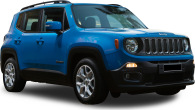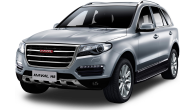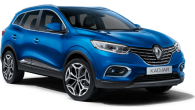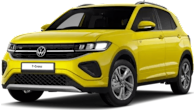This is not the Subaru Forester Sport model they get in Japan, and it's therefore not the one most Aussies have been desperate to see launched here.
Nope, the giveaway is the 2.5i part of the name for this 2021 Subaru Forester 2.5i Sport model, which has just been added to the brand's range to add a bit more of an eye-catching variant to the line-up.
In Japan, the Sport gets a new turbocharged petrol engine, but this one instead soldiers on with the same powerplant as the rest of the Forester range, but there have been plenty of changes and additions besides.
Is it any good? Should you buy a Forester Sport over one of its many rivals, like the Toyota RAV4, Honda CR-V or Mazda CX-5? Let's try and answer those questions in this review.
Subaru Forester 2021: 2.5I Sport (awd)
| Engine Type | Flat 4, 2.5L |
|---|---|
| Fuel Type | Unleaded Petrol |
| Fuel Efficiency | 7.4L/100km (combined) |
| Seating | 5 |
| Price From | $31,020 - $37,400 |
| Safety Rating |
|
Does it represent good value for the price? What features does it come with?
8 / 10
The new Subaru Forester 2.5i Sport model is a $41,990 proposition - that's the MSRP/RRP, or the price before on-road costs (you might find driveaway deals if you search Autotrader, though).
It slots in between the 2.5i Premium ($39,490) and the 2.5i-S ($42,990), but it stands out compared to both of those versions with a revamped design and a number of inclusions over the models below it, but most of them are visual differentiators which we'll detail in the next section.
.jpg)
Let's consider the standard equipment offered here: black 18-inch alloy wheels with a full size spare, an electric sunroof, water repellent cloth interior trim, electric front seat adjustment (driver's side with memory settings), heated front seats, electric tailgate, electric folding rear seats, smart key hands-free entry and push button start, auto headlights and auto wipers.
There's also a 8.0-inch touchscreen media system with Apple CarPlay and Android Auto smartphone mirroring tech, DAB+ digital radio, CD player, six speakers, Bluetooth phone and audio streaming, 4xUSB ports (2x front, 2x rear), a 4.2-inch digital driver info display with digital speedo, and a leather-lined steering wheel and shifter.
The safety story is a very strong one - see the section below for all the details.
.jpg)
Things missing from the 2.5i Sport that you might want for include an auto-dimming rear-view mirror, a proper surround-view camera, and leather seat trim.
Colours available for this spec comprise: Crystal Black silica, Crystal White pearl (as seen here), Dark Blue pearl (exclusive to Sport), Ice Silver metallic, Magnetite Grey metallic and Sepia Bronze metallic. The green and red options are not available on Sport, but no matter the colour you opt for, it won't cost you any extra.
Obviously though, you might want to choose carefully, as there are some orange highlights inside and out that might not match up with your preferred colour choice. Let's get to that next.
.jpg)
Is there anything interesting about its design?
8 / 10
If you've ever trawled the Subaru Japan website like me (high five, car nerds!), you might be thinking: "This Subaru Forester Sport model looks a lot like that Forester X-Break in Japan!". And you'd be right.
It is, essentially, the same car. Just with a considerably nicer looking set of wheels than the Japanese model. They aren't my favourite rims, but then again, I think the Forester's rims on the whole are pretty yuck.
.jpg)
Wheels aside, the flashes of orange around the car will no doubt catch your eye. There are plenty of them: the lower body protection has orange trim from the front bumper to the side skirts/sills and the rear bumper, too; plus there are orange bits as part of the roof rails, too.
The exterior also cops a bit of a blackout treatment, with new dark graphics front and rear, including a black garnish between the tail-lights. And of course, the rims are black, too.
.jpg)
Inside the style a bit more adventurous, with a smattering of orange trim highlights on the vent surrounds, the transmission tunnel, the stitching that runs on the dashboard, doors and seats, and even the eye-catching and intriguing mesh-look water-repellent trim on the seats that goes up to the doors, too. I guess Subaru assumes Forester Sport buyers will be spending a lot of time in the rain?
I really love the orange trim finishes - they really lift the ambience of the cabin and make it feel a bit more exciting than a regular Forester. In fact, it's like the Forester looked a bit further down the Subaru line-up to the XV and said, "Hey, how come you're getting all the attention?".
There are some inherently awesome SUV features that the Forester's interior design brings to the fore - we'll get to that in the next section.
.jpg)
How practical is the space inside?
9 / 10
The Forester could be the most practical vehicle in its class. Against the likes of the Toyota RAV4, Mitsubishi Outlander, Mazda CX-5 and VW Tiguan, it stacks up pretty well for cabin practicality, space utilisation and accommodation.
It's a nice, bright and airy place to be, with a big glasshouse that makes it feel a bit more outdoorsy than its rivals. The benefits of that are two-fold - it's easy to see out of, whether you're the driver or if you're a kid in the back.
Looking up front first, the Forester's cabin presentation is much more eye-catching in this grade. The other models in the range are, well, a bit bland. The Sport, though, is a bit more - dare I say it - sporty. And I personally hate models called Sport, but that's a story for another day.
.jpg)
The orange stitching everywhere and the orange metallic look finishes on the dash and the centre console - it combines for a more special feeling cabin than any of the other Foresters available.
I really appreciate the media screen Subaru offers - it's easy to use and is bright and colourful, and also the flush finish design - not a floating tablet style screen - does make it just a little easier to use. However there is a secondary screen above it, which shows you a bunch of information about the car that you theoretically will never actually need to know.
That top pod also has a driver monitoring camera system which is looking at you all the time and will warn you if you take your eyes off the road for too long. Intriguingly, it flashes a warning onto another screen - the one on the instruments, which also makes you look away from the road...
It really is a button and screen overload. If you like minimalism, you're not going to like the number of things in front of you as the driver of a Forester. But they all have a purpose (sort of), and for me, it's better than everything being run through touch screens!
.jpg)
The front seats are quite comfortable, with electric adjustment for the driver and passenger. Both are electric adjusted and heated as well, which is nice, and the material used is genuinely really comfortable - it's like a good quality couch.
Even though those are nice elements, I couldn't find myself a perfect driving position – I feel like I sat just a little too high and I couldn't get the steering wheel in quite the right position for my preferences.
Storage is mostly okay up front: the cupholders between the seats are a little bit deep so small takeaway coffees might be hard to get out, and there are bottle holders in the doors, a small cubby in front of the gear selector for a wallet and/or phone, and that's also where you'll find 2USB ports. No wireless phone charging, though.
The overall space for a family of four is perfectly usable. There is no seven seater version of the Forester, nor any seven-set SUV in the brand's range at all in Australia, so it's strictly a smaller family affair, or a good option for grandparents on duty.
There's very good second row seat space, with a high seating position and hip point allowing for adults to easily slot in there (I'm 182cm/6'0" and I can fit behind my driving position with heaps of leg, toe and headroom to spare), but it's also a handy height for child loading, with dual ISOFIX and three top-tether points. Weirdly, though, Subaru has kept with the ceiling-mounted centre seatbelt, and the seat is flat and a bit uncomfortable for adults in terms of cushioning and support. Great for child seats, though.
.jpg)
There are plenty of smart features in the second row, including twin map pockets on the seat backs, one of which is sectioned and divided for smaller items. Plus there are those two USB ports for charging devices (again, perfect for a family of four), and there are rear directional air vents. There is a fold-down armrest with cupholders, plus bottle holders in the doors.
Weirdly there are LED lighting pods for the boot and the tailgate, and up in the front of the cabin there is LED lighting, too - but in the centre, the middle lighting pod is halogen. Weird.
The boot area offers 498 litres of cargo capacity (VDA) with the seats up, but hit the electric release levers (handy!) at the sides of the boot and you liberate a total 1740L of space - enough for a pair of mountain bikes or a few weeks' worth of camping gear for a couple.
Plus there are shopping bag hooks on the outer sides of the boot area and one on the tailgate,, plus four tie down points if you need to attach things and stop it from rolling around. There's a cargo blind, and a 12 V outlet in the boot, too.
What are the key stats for the engine and transmission?
7 / 10
As mentioned in the introduction, we don't see the new 1.8-litre turbo-petrol engine here, with its 132kW/300Nm currently not available for our market.
Instead, the 2.5i part of the name indicated a carryover 2.5-litre four-cylinder horizontally-opposed 'boxer' engine producing 136kW of power (at 5800rpm) and 239Nm of torque (at 4400rpm). No turbo here.
.jpg)
The Forester is available solely with a continuously variable transmission (CVT) Lineartronic automatic gearbox, and as it's a Subie, of course it has the brand's "Symmetrical" all-wheel drive (AWD) system standard, too.
The Sport grade isn't available with the brand's hybrid powertrain, though that's no great loss. Read our review where we compared that version against the excellent RAV4 hybrid to see how it fared
The 2.5i models have seen a towing upgrade for 2021, with the unbraked rating set at 750 kilograms, while the braked towing capacity is now 1800kg (up from a meagre 1500kg in earlier models).
How much fuel does it consume?
7 / 10
The official combined cycle fuel consumption figure for the Forester 2.5i Sport is identical to the rest of the range: 7.4 litres per 100 kilometres, with emissions claimed at 168g/km CO2.
On test, we saw an at the pump fuel economy of 9.5L/100km across a mix of urban, highway, country and open road driving (plus a very short unsealed off-highway stint).
Fuel tank capacity is 63 litres. It can run on the more affordable 91RON regular unleaded.
What's it like to drive?
7 / 10
The Subaru Forester is a smooth and decent family SUV, one that doesn't necessarily do anything exceptionally well, but nor is it terrible at anything when it comes to on-road driving.
In fact, my biggest complaint is the noise intrusion - there's quite a bit of tyre roar through even normal road surfaces, and coarse chip roads are louder again. There's also wind noise up around the windscreen and mirrors, and the engine is noisy under acceleration because of the CVT automatic transmission, and it doesn't sound overly delightful, either.
That said, the 2.5-litre engine's response is pretty good, offering decent and linear power delivery. It's not fast, not overly fun, and the CVT auto does rob it some of the excitement you might want. However, it jumps away from a standstill pretty nicely, and if you can hit the sweet spot when you're accelerating you might be surprised by its brisk response.
There are paddle shifters to take matters into your own hands - though even if you use the SI drive mode selector (Sport or Intelligent drive modes), it's less thrusty than turbocharged competitors (Ford Escape) or even hybrid-powered rivals (Toyota RAV4).
.jpg)
The ride comfort is quite good, there's a nice supple attitude to the suspension and the way it controls itself over bumps, but it is quite soft and that means that there is some noticeable body roll in corners.
Thankfully the seats are really quite nice and offer good support, and while the steering is decently weighted and accurate enough it's hardly the last word in excitement for thrills. I'm also not much of a fan of the lane keeping system and how it affects the steering, as it interrupts the smoothness of your steering a little too much. There's a button you can hit to turn it off, but you have to do it every time.
And that driver-monitoring camera system really does make you realise how much you're not looking at the road ahead. I'm a constant glancer, looking at whatever is driving past or whatever I see parked in people's driveways, and the system really made me realise that.
Because it's a Forester with all-wheel drive, I took it for a brief light off road review expedition, where it lived up to the brand's adventure-focused persona.
.jpg)
The most impressive element was a combination of nice high ground clearance (220mm), plus the way that soft suspension rolled over rocks and bumps allows decent travel to the suspension, and good control to the driver's hands, too.
The drive mode selection system allows you to choose "snow/dirt" or "deep snow/mud", meaning soggy camping trips or drives to the snow should be pretty well catered for. Like most soft-roading vehicles and crossovers, though, the tyres will be your biggest letdown but also your easiest upgrade.
The hill descent control system worked really well, and while I wasn't pushing any boundaries of what to expect a SUV like this to do, it was pretty well sorted of the whole.
Warranty & Safety Rating
What safety equipment is fitted? What safety rating?
9 / 10
The Subaru Forester range scored the maximum five-star ANCAP crash test safety rating in 2019. The criteria has gotten tougher since then, but no mid-size SUV has been put against it to date.
That said, the Forester has an extensive safety technology specification list, starting with auto emergency braking (AEB) that works both in city and inter-urban settings up to 80km/h, and it features pedestrian and cyclist detection, too.
There's also lane departure warning with an active lane keeping assistance system that works from 60km/h to 145km/h, and there's adaptive cruise control that works through the brand's stereo camera EyeSight system. Blind spot monitoring and rear cross-traffic alert are standard, as is a rear AEB system to stop you bumping into cars or walls at low speeds, rear parking sensors, a reversing camera that is complemented by a front and front kerbside camera (not quite surround view, but close).
The Forester has seven airbags (driver's knee, dual front, front side, full-length curtain), and there are dual ISOFIX outboard child-seat anchors and three top-tether points.
What does it cost to own? What warranty is offered?
7 / 10
Subaru Australia backs its cars with a five-year/unlimited kilometre warranty, which is on par with its main rivals but behind the likes of Mitsubishi (10 years if you service with them) and Kia (seven years).
The brand offers just 12 months of roadside assistance when you buy a new car, where some others offer seven years or more.
.jpg)
The company also has unusual service intervals of 12 months/12,500km, with a capped price servicing plan that spans five years/62,500km. The average cost per service over that period is high, at $476.50 per annum - and it'll be even higher if you do a lot of kilometres.
There are also three-year and five-year service plans available. If you sign up for those, you get three years roadside assist plus a loan car when you get your car serviced. The costs for those are $1281.81 (three years/37,500km), or $2382.52 (five years/62,500km).
Verdict
The Subaru Forester Sport is an interesting new addition to the range, despite not really moving it forward in any other way apart from its eye-catching looks. It is a competitive counterpoint to the likes of the CX-5 and CR-V, but still doesn't quite reach the same levels of refinement and driving enjoyment of the RAV4.
There is no doubt the Forester Sport will add a level of appeal that Subaru has been needing in its family SUV range since launch, but we really think the thing that would get more customers excited would be a new turbocharged top-spec model, which would certainly be more deserving of the Sport name.
Pricing Guides

.jpg)
.jpg)
.jpg)
.jpg)
.jpg)
.jpg)
.jpg)
.jpg)









































 copy.png)













.jpg)
.jpg)

.jpg)

